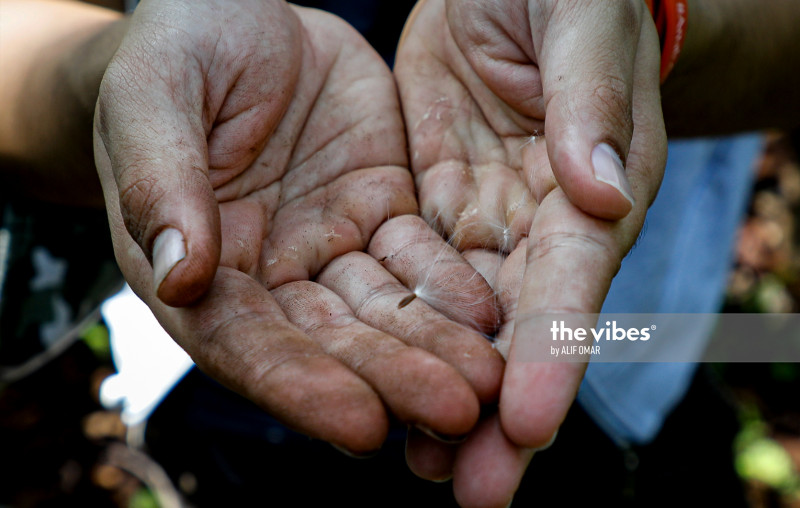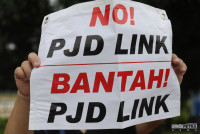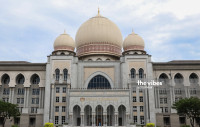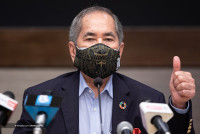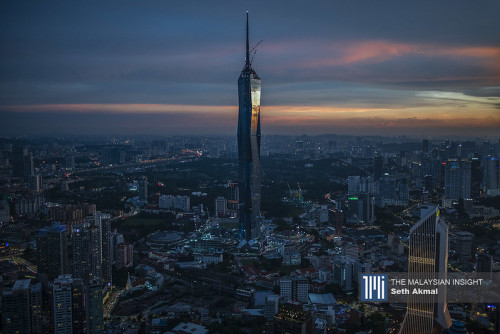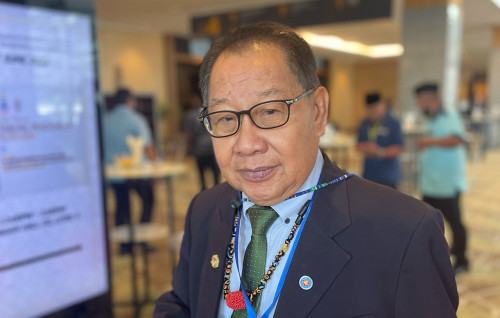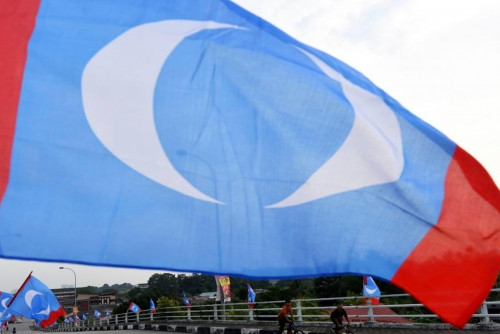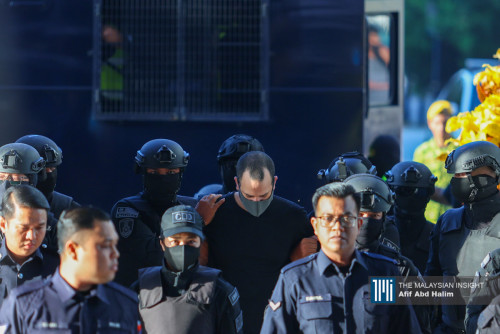KUALA LUMPUR – Nature is nothing if not the greatest healer – a dictum that has proved itself with a devastating bushfire that scorched a portion of the Kuala Langat North Forest Reserve (KLNFR) 10 years ago.
Lush greenery now fills an area previously reduced to grey ashes and the charred remains of meranti and pauh timber. It is a scene that attests to the cyclical and intertwining nature of life and death.
But evidence of the torched past has taken a most unlikely form, one that will elude the eyes of those unfamiliar with the ways and nuances of the 8,000-year-old peat swamp forest.
“There they are,” said Samsul Anak Senin, during The Vibes’ second tour of the reserve, pointing at a scattered bunch of tall juvenile trees with blotchy white lichen decorating their slender grey boughs, towering amid a bushy thicket of ferns.
“Those are the mahang trees,” he said as we crossed a shallow trench with black-tea waters irrigated from the main ditch separating KLNFR and the adjacent Orang Asli settlement, Kg Busut Baru.
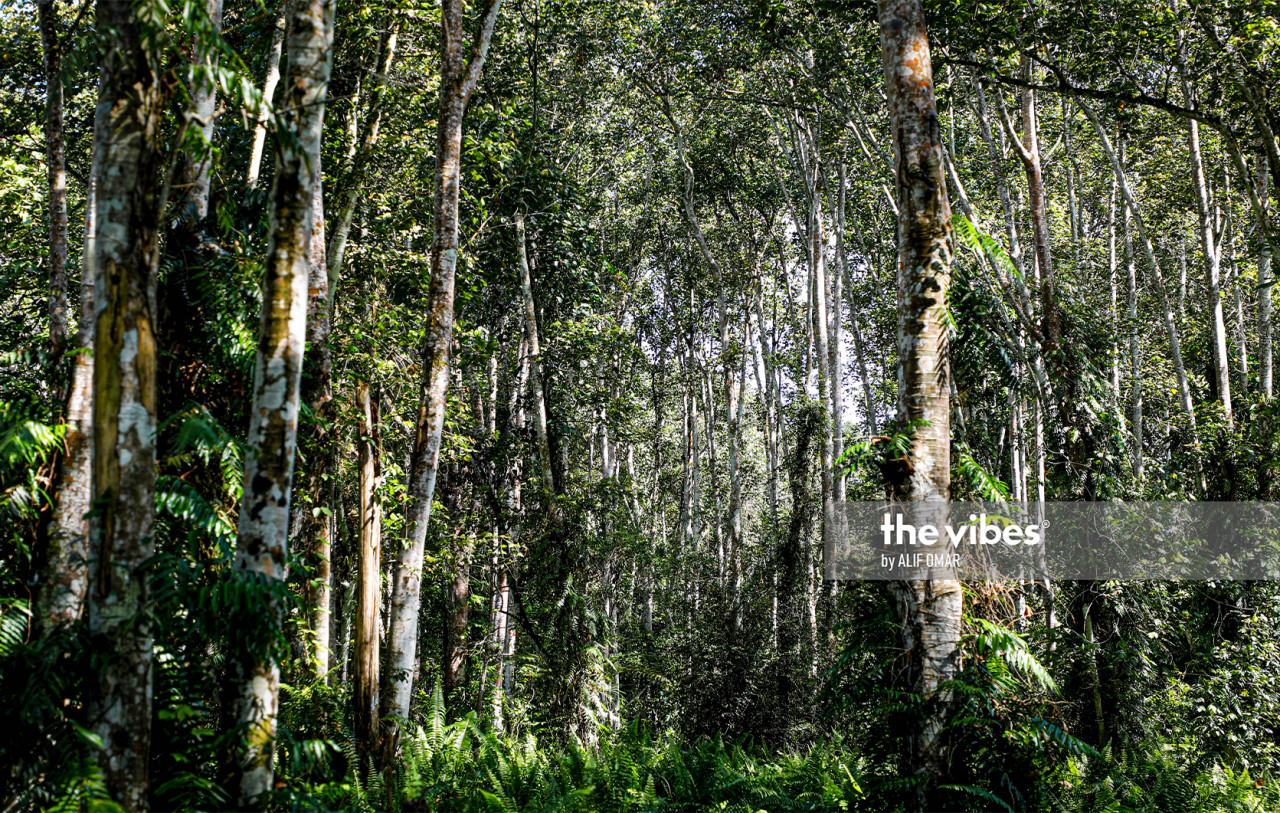
Should a fire burn a forest clean, Samsul said, mahang will usually be one of the first forest trees to regrow, owing to its highly delectable fruit among various animals and birds.
“As they cannot thrive in areas with poor sunlight, an open setting devoid of huge canopy trees casting wide shade is the most ideal environment for the mahang to flourish,” he said.
Like many in Kg Busut Baru, Samsul was unsure what started the fire, save for the fact that the blaze came from the eastern side of KLNFR – reportedly near the north-bound Dengkil Utara rest area of the Elite expressway.
The catastrophe was so dated that it even seemed to escape the knowledge of Selangor assemblymen, as they decried the proposed degazettement of KLNFR to make way for a mixed development, and passed a motion last month to protect all forest reserves in the state.


“As far I know, there has been no bushfire in KLNFR for the past five years,” Elizabeth Wong (PKR-Bukit Lanjan) told the state assembly during the previous sitting.
“We have ensured that proper water management control is maintained in the area to prevent such fires,” said the former tourism, consumer affairs and environment exco.
However, the southern counterpart of KLNFR – the Kuala Langat South Forest Reserve (KLSFR) – has been less fortunate.
This year, KLSFR suffered a bushfire that stretched two weeks, taking place between late March and early April. The fire razed 80ha of land.
In March last year, a total of 89ha of forests were burned.
The flammable peat soil areas were one of the reasons cited by the state government in justifying the need for KLNFR’s development, to circumvent incidences of bushfire there.
But since nature is interconnected, to simply develop a peat swamp forest the size of KLNFR – 931ha – may inadvertently harm neighbouring areas.
“It will cause a groundwater imbalance in the neighbouring area,” said Geological Society of Malaysia president Abd Rasid Jaapar.
“Such imbalances will make the peat soil outside of the forest even drier.”
And this poses a huge risk, he said in an interview with The Vibes, as the bulk of the soil in Selangor’s west coast has peat in it.
“Peat is an accumulation of partially decayed vegetation or organic matter, and is accumulated in wetlands with high water table areas. It is not flammable by nature, unless it is exposed to air and dries up.”


A water table, also called a groundwater table, is the upper level of an underground surface in which the soil or rocks are permanently saturated with water.
“There will be no more bushfires because the peat will be excavated and replaced with other imported filling material, in the event development takes place.
“But when peat is removed, it will lower the surrounding water table. We have to consider peat as a water basin,” said Rasid.
However, there may be other problems, including that of settlements. Bumpy and uneven roads, and cracks forming on drains and the aprons of houses were the few examples listed by Rasid.
“Peatlands absorb carbon dioxide. If we reduce our peatlands, we are contributing to the accumulation of greenhouse gases (which feed climate change),” he said.


According to the second edition of the Works Ministry’s Guidelines for Construction on Peat and Organic Soils in Malaysia, Malaysia currently has a total of 2,457,730ha of peat-covered land, with the largest area being in Sarawak at 1,697,847ha, followed by the peninsula (642,918ha) and Sabah (116,965ha).
According to a 2010 report by Wetlands International, Selangor in the early 1950s had 121,276ha of total pristine peat swamp forest area.
It then shrunk significantly to 94,400ha in 1982, and diminished five years later to 78,161ha.
There is no information on the latest figure.
“I think we are the only country to have a guideline on how to develop on peat ground. Most developed countries do not touch these areas. In fact, some declare it as either heritage land or Ramsar sites,” said Rasid.
KLNFR is one of the four remaining peat swamp forests in Selangor, and not the only one of its kind that has managed to heal itself following a devastating blaze.

Twenty years ago, the Raja Musa Forest Reserve, which sits at the northern end of Selangor, lost thousands of hectares to a bushfire. However, like KLNFR, it eventually healed with the help of efficient water management.
Two years ago, the peat forest was crowned as a model forest reserve, earning the Queen’s Commonwealth Canopy. – The Vibes, December 18, 2020



